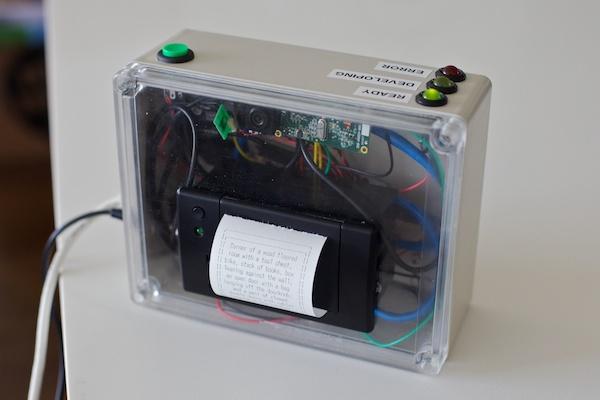
The world of concept gadgets is a weird one – and that’s why we love it. But every once in awhile, this strange and complicated place features a few ideas that leave us scratching our heads. This Descriptive Camera created by Matt Richardson does precisely that.
Instead of taking photos and logging metadata, this camera actually produces that metadata and translates it into human descriptions of the scene. For example, if you take a picture of an old chair, the result might read something like “This is a chair that looks worn. It seems to be old. It needs to be fixed.”
Now the impetus for this product might not clear, but the technology the powers it is certainly remarkable. The camera uses Amazon’s Mechanical Turk API, which allows developers to outsource this metadata to actual people (this being called a Human Intelligence Task) who are paid to read it and translate it into language readable by humans (interested? You can sign up to be a Mechanical Turk Worker here). There’s also an option called “accomplice mode” where the camera will instant message a person with the picture and then will receive the description. This is faster and cheaper but the results aren’t quite as high quality.
As it currently exists, this means you snap a picture, the photo is sent in for translation, and then you wait. You have to pay for the Human Intelligence Task service, which costs $1.25 each time and returns the results within 3-6 minutes.

The Descriptive Camera is connected to the Internet via ethernet and is powered by an external 5 volt source, but Richardson says his long term vision is to create something that looks and functions like an actual digital camera and is wireless.
Still can’t get beyond why? Neither can we – the need for a written description of a scene instead of the image just doesn’t connect. But the use of the Mechanical Turk API is fairly interesting and sort of magic in a way, and many photo junkies would probably agree that a more reader-friendly format for our metadata would be a welcome change. It’d be great to see this product integrated with images to print or log image info (including ISO, aperture, shutter speed, etc) that’s better written for humans.
For now, it exists as a concept without a ton of real-world application. That said, there’s something undeniably tempting about taking pictures and having them interpreted by someone else. Check out examples of how the Descriptive Camera works below.



